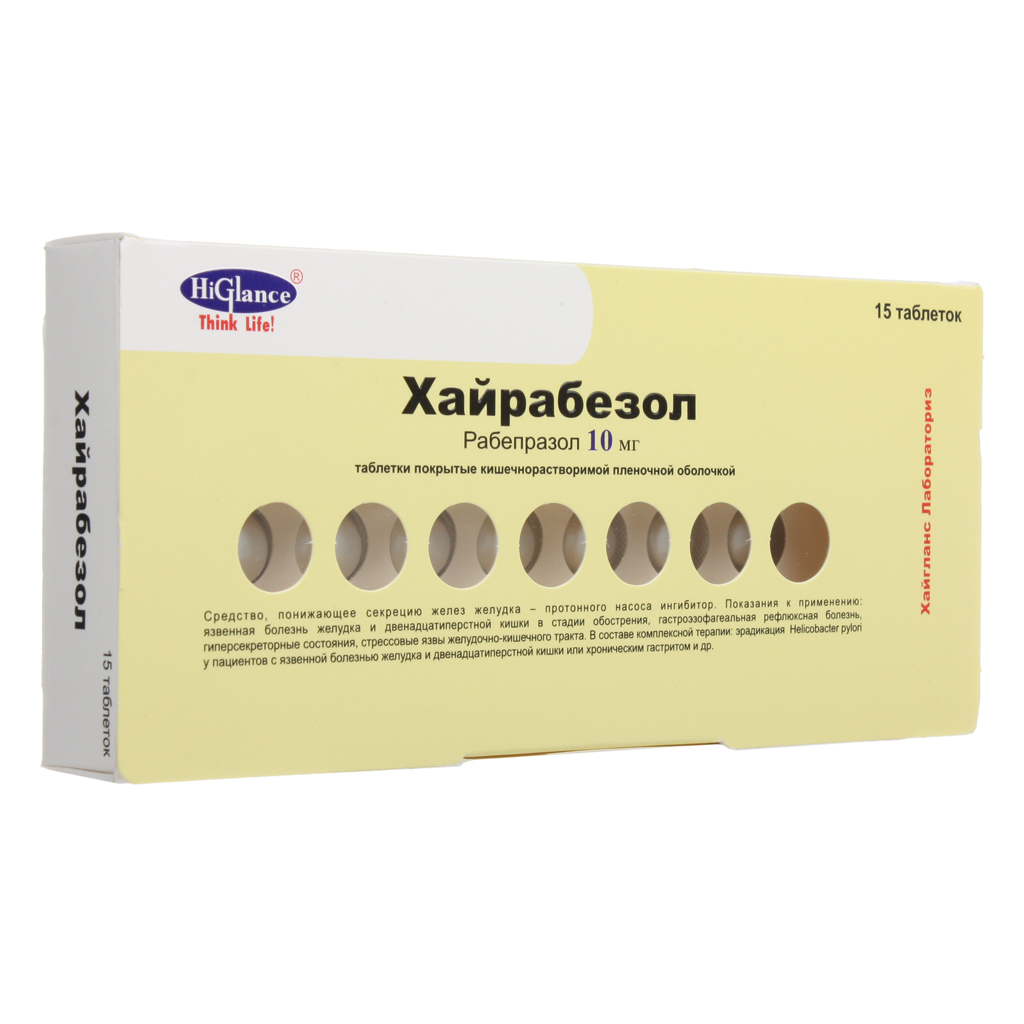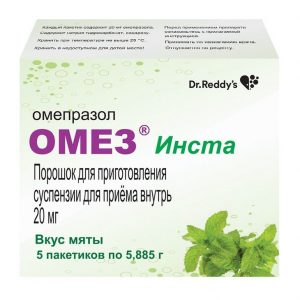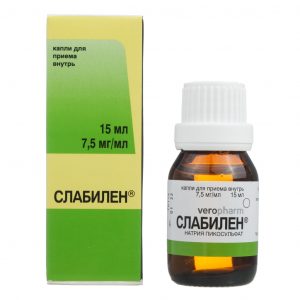Description
Latin name
Hirabezol
Packing
15 pcs
Indications
gastric and duodenal ulcer in the acute stage
gastroesophageal reflux disease
hypersecretory conditions, including Zollinger-Ellison syndrome
gastrointestinal ulcers.
As part of complex therapy: Helicobacter pylori eradication in patients with peptic ulcer of the stomach and duodenum or chronic gastritis
treatment and prevention of relapse of peptic ulcer associated with Helicobacter pylori.
Contraindications
pregnancy
breastfeeding
children and adolescents under 18 years of age
hypersensitivity to rabeprazole, benzimidazole or other components of the drug.
With caution, the drug should be prescribed for severe liver failure, severe renal failure.
Use during pregnancy and lactation
Rabeprazole should not be prescribed to pregnant women (there are no data on the safety of rabeprazole during pregnancy). At the time of treatment should stop breastfeeding. It is not known whether rabeprazole is excreted in breast milk. Appropriate studies in nursing women have not been conducted.
Composition
1 tablet contains:
Active ingredient: rabeprazole sodium 10 mg
Excipients: magnesium oxide mannitol starch corn povidone K30 low-displacement sodium hydroxide stearyl fumarate
Intestinal soluble shell: titanium cellacephate dioxide dye iron oxide red.
Dosage and Administration
Inside. Tablets should be swallowed whole without chewing or crushing. It was found that neither the time of day, nor food intake affect the activity of rabeprazole.
With gastric ulcer in the acute stage and anastomotic ulcer: 10 or 20 mg once a day. Usually, cure occurs after 6 weeks of therapy, but in some cases, the duration of treatment can be increased by another 6 weeks.
With peptic ulcer of the duodenum in the acute stage: 20 mg once a day. In some cases, the therapeutic effect occurs when taking 10 mg once a day. The duration of treatment is from 2 to 4 weeks. If necessary, the duration of treatment can be increased by another 4 weeks.
In the treatment of erosive GERD or reflux esophagitis, 10 or 20 mg once daily. The duration of treatment is from 4 to 8 weeks. If necessary, the duration of treatment can be increased by another 8 weeks.
With maintenance therapy for GERD, 10 or 20 mg once daily. The duration of treatment depends on the patient’s condition.
With non-erosive GERD (NERB) without esophagitis, 10 or 20 mg once a day.
If after 4 weeks of treatment the symptoms do not disappear, an additional examination of the patient should be carried out. After stopping the symptoms, to prevent their subsequent occurrence, the drug should be taken orally at a dose of 10 mg 1 time per day, as required.
For the treatment of Zollinger-Alison syndrome and other conditions characterized by pathological hypersecretion, the dose is selected individually. The initial dose is 60 mg per day, then the dose is increased and the drug is prescribed in a dose of up to 100 mg per day with a single dose or 60 mg 2 times a day. For some patients, fractional dosing of the drug is preferred. Treatment should continue as needed. In some patients with Zollinger-Alison syndrome, the duration of treatment with rabeprazole is up to one year.
For the treatment of duodenal ulcer or chronic gastritis associated with H. pylori infection, a 7-day treatment course of one of the following drug combinations is recommended: Hairabesol 20 mg 2 times a day + clarithromycin 500 mg 2 times a day and amoxicillin 1 g 2 times a day.
Hayrabesol 20 mg 2 times a day + clarithromycin 500 mg 2 times a day and metronidazole 400 mg 2 times a day.
Patients with renal and hepatic insufficiency. Dose adjustment in patients with renal failure is not required.
In patients with mild to moderate hepatic insufficiency, the concentration of rabeprazole in the blood is usually higher than in healthy patients.
Caution should be exercised when prescribing Hyrabezole to patients with severe liver failure.
Elderly patients. Dose adjustment is not required.
Children. The safety and efficacy of rabeprazole 20 mg for short-term (up to 8 weeks) treatment of GERD in children aged 12 years and more is confirmed by extrapolating the results of adequate and well-controlled studies supporting the efficacy of rabeprazole for adults with safety and pharmacokinetics studies in pediatric patients. The recommended dose for children aged 12 years or more is 20 mg 1 time per day for up to 8 weeks. The safety and effectiveness of rabeprazole for the treatment of GERD in children under the age of 12 years has not been established. The safety and effectiveness of rabeprazole for other indications have not been established for pediatric patients.
Side effects
abdominal pain, nausea, loose stools or constipation
headache, dizziness
runny nose, cough
decreased white blood cell count, blood platelet
allergic reactions.
Drug Interaction
The drug Hayrabezol does not interact with liquid antacids. In the event of drowsiness, you should give up driving and other activities requiring increased attention. When taken jointly, the Hyrabezol preparation reduces the effect.
overdose Symptoms: data on intentional or accidental overdose are minimal. No cases of severe overdose with rabeprazole were noted.
Treatment: The specific antidote for rabeprazole is unknown. Rabeprazole binds well to plasma proteins and is therefore poorly excreted in dialysis. In case of overdose, symptomatic and supportive treatment should be performed.
Storage conditions
The drug should be stored in a dry, protected from light, out of reach of children at a temperature of 8 ° C to 25 ° C.
Expiration
2 years.
Deystvuyuschee substance Rabeprazole
dosage form
dosage form
tablets
Highlig Laboratories Pvt. Ltd. India




